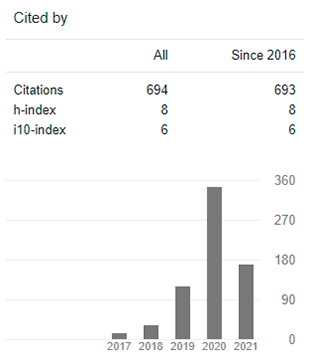Analysis of Strategies Used in Cultural and Artistic Education for the Development of Creative Thinking
Análisis de las Estrategias Empleadas en Educación Cultural y Artística para el Desarrollo del Pensamiento Creativo
DOI:
https://doi.org/10.29394/Scientific.issn.2542-2987.2024.9.33.16.341-360Keywords:
teaching strategies, creative thinking, arts education, pedagogical innovation, cognitive developmentAbstract
Cultural and Artistic Education (CAE) is essential for cognitive development. This research analyzes CAE teaching strategies that promote creative thinking in 12 seventh-grade students from the "Primero de Mayo" Educational Unit in Zumba, Ecuador. An exploratory methodology with a mixed approach (qualitative-quantitative) was implemented, applying a quantitative-qualitative survey to students and a literature review on creative thinking strategies. Results reveal that all students recognize the importance of CAE in developing their creativity, identifying drawing and painting as the most effective strategies, generating high motivation (91,7%) to explore new ideas. The study concludes that, despite rural context limitations, developing creative thinking through accessible and contextualized strategies is feasible, showing significant improvements in students' creative abilities. Experimental research is recommended to establish correlations between creative thinking and academic performance, as well as to deepen related concepts such as divergent and lateral thinking.
Downloads
References
ANEP (2022a,b). Marco Conceptual de Pensamiento Creativo. Programa PISA. Uruguay: Administración Nacional de Educación Pública.
Flores, J., Ávila, J., Rojas, C., Sáez, F., Acosta, R., & Díaz, C. (2017a). Estrategias Didácticas para el aprendizaje significativo en contextos universitarios. ISBN: 978-956-9280-27-6. Concepción, Chile: Universidad de Concepción.
Gonzaga, R. (2022a,b,c). Pensamiento creativo: una estrategia para el proceso de enseñanza-aprendizaje. Hacedor - AIAPÆC, 6(1), 80-91. ISSN: 2520-0747. Recuperado de: https://doi.org/10.26495/rch.v6i1.2124
Hernández-Sampieri, R., & Mendoza, C. (2018a,b). Metodología de la investigación. Las rutas cuantitativa, cualitativa y mixta. ISBN: 978-1-4562-6096-5. Ciudad de México, México: Editorial McGraw-Hill Education.
Monteza, D. (2022). Estrategias didácticas para el pensamiento creativo en estudiantes de secundaria: una revisión sistemática. Revista Innova Educación, 4(1), 120-134, e-ISSN: 2664-1496. Perú: Instituto Universitario de Innovación Ciencia y Tecnología Inudi Perú.
Ochoa, G., & Barrera, M. (2017). Influencia de la lectura de imágenes en el desarrollo del pensamiento creativo, en el área de lengua y literatura de los estudiantes de octavo grado de educación general básica superior, del Colegio de Bachillerato República del Ecuador, zona 7, distrito 07F02, provincia de El Oro, cantón Machala, parroquia La Providencia, período lectivo 2016-2017. Tesis. Ecuador: Universidad de Guayaquil.
Villegas, E. (2022). Estrategias didácticas para promover el pensamiento creativo en aulas. Revista Innova Educación, 4(1), 109-119, e-ISSN: 2664-1496. Perú: Instituto Universitario de Innovación Ciencia y Tecnología Inudi Perú.
Zambrano, B. (2022). El desarrollo del pensamiento creativo en los estudiantes: Una estrategia para pensar críticamente. Revista Científica FIPCAEC, 7(4), 92-106, e-ISSN: 2588-090X. Ecuador: Polo de Capacitación, Investigación y Publicación (POCAIP).
Published
How to Cite
Issue
Section
License
Copyright (c) 2024 INDTEC, C.A.

This work is licensed under a Creative Commons Attribution-NonCommercial-ShareAlike 4.0 International License.
The content of the journals of this site, are under a Creative Commons Attribution-Noncommercial-Share Alike 4.0 International License.













